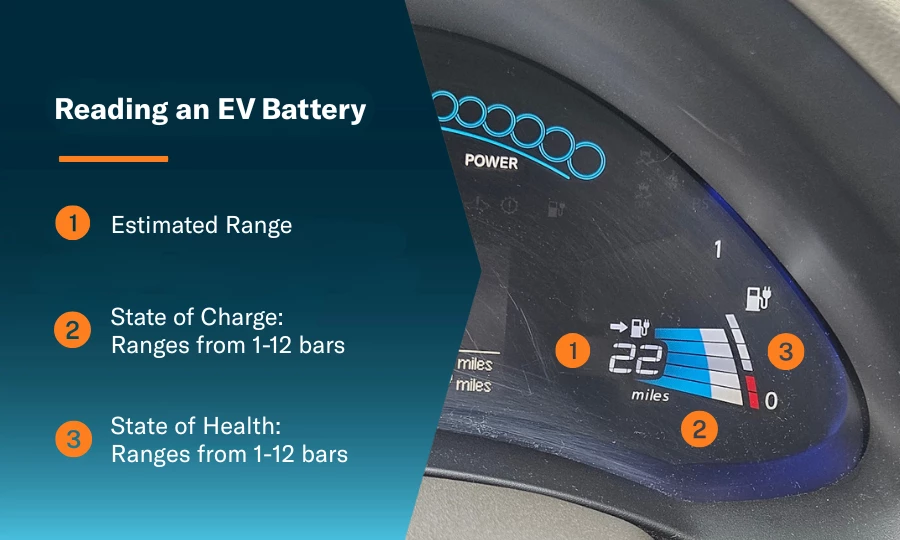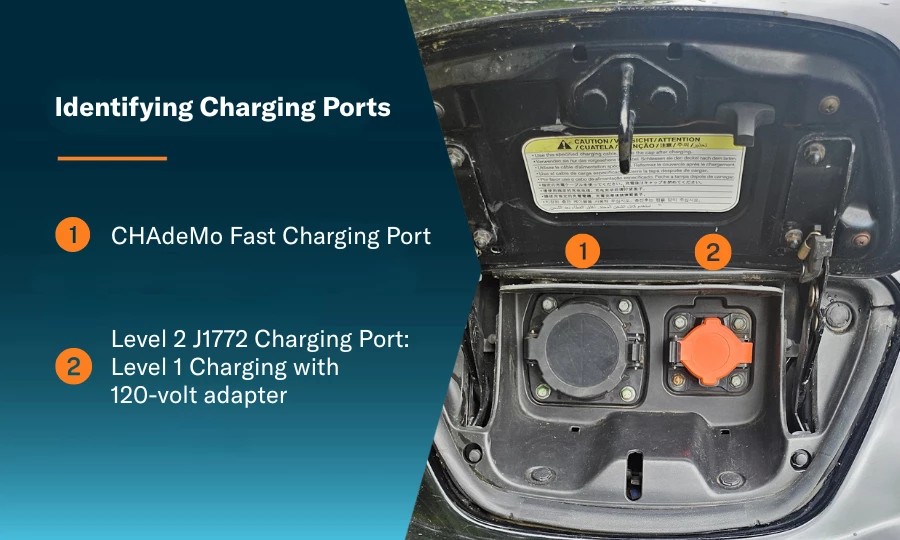Is the Nissan Leaf an Affordable Used EV or Battery Replacement Trap?
With electric vehicles becoming more popular (EVs account for 7.5% of registrations as of March 2025), it’s reasonable for a curious EV shopper to look at the used car market. A little research shows you can find drivable examples of older Nissan Leafs for less than $3,000, which is especially appealing when the average second-hand vehicle costs over $25,000, according to Kelley Blue Book (KBB).
The Leaf came to prominence as one of the first mass-produced all-electric cars sold in the U.S., one year before the Tesla Model S. Let’s explore whether the pioneering Leaf is a genuine value or if its drawbacks overshadow its advantages. Follow along for first-hand insights and experience from an auto aficionado who bought a 2012 Nissan Leaf at auction.
Nissan targeted affordability when it developed the Leaf, unlike the Model S, which hit the market with a $60,000 base price. In contrast, the 2011 Leaf launched with a starting MSRP around $34,000. That sets the stage for a potential bargain, under the right conditions. At the same time, it’s reasonable to wonder why some Nissan Leafs are so cheap. Here’s a breakdown of the reasons why.
Electric vehicles typically depreciate faster than conventional cars, and front and center to this is the Leaf. Automotive marketplace iSeeCars.com reports that a new Leaf loses over 61% of its value during the first five years. In comparison, the typical conventional vehicle depreciates by about 44% over the same period. The $1,700 I spent on a 12-year-old Leaf represented just 4.5% of its original MSRP, a shockingly high drop in value.
Older Leafs, like mine, offered just 84 miles of range when they were new cars, with later first-generation examples reaching 107 miles. That’s woefully short compared to the 300 to 500 miles of range offered by some of the latest EVs. Even the second-generation Leaf (debuting for the 2018 model year) offered 150 to 226 miles of capability. While general commuting and daily driving don’t require this amount of range, many buyers want the freedom of a conventional vehicle’s longer range (and more convenient access to gas stations).
One of the most significant problems with older Leafs is battery degradation. In developing the Leaf as cheaply as possible, Nissan didn’t use a liquid-cooled thermal management system, which helps preserve battery life. Since then, most other EVs sold in the U.S. incorporate this battery technology. As a result, the air-cooled system in the first- and second-generation Leaf can be inadequate in extreme temperature conditions, especially high heat. The second generation’s improved battery chemistry lessened this issue somewhat, but not completely. This is detailed below.
In addition, Level 3/DC fast charging (on Leafs equipped with this feature) or charging the battery to 100% instead of the recommended 80% can further degrade the battery.
The Nissan Leaf battery system represents the car’s greatest asset and potential liability. Understanding these factors is vital before purchasing a used one.
As mentioned, the Leaf’s battery is prone to degradation. Here’s an approximation of what this means in practical terms:
| Within 2 years | 5-10% |
| By year 4-5 | 10-15% |
| By year 7-8 (in moderate climates) | 20-30% |
| Within 5-7 years (hot climate) or 10 years (moderate climates) | Up to 50% |
Would-be Leaf purchasers should know about the battery health monitoring system displayed as “State of Health” (SOH) percentage. This critical metric indicates remaining capacity compared to when you have a new battery:
| 100-85% | Normal/Minimal Range Impact |
| 84-70% | Moderate/Noticeable Range Reduction |
| 69-60% | Significant/Substantial Range Decline |
| Below 60%: | Severe/Extreme Loss of Range |
You can drive a Leaf with an SOH level below 60%, but its range may be extremely limited. It’s not unusual to see a super-cheap Leaf for sale with a range of 15 to 20 miles. The Leaf I bought had a 63% SOH level and a top range of about 45 miles. A year later, it’s down to 57% and can barely make it 40 miles on a full charge. Determining SOH requires a third-party smartphone app and Bluetooth adapter for the onboard diagnostic port. This is detailed later (see: What to Know Before Buying a Used Nissan Leaf).

Before getting into third-party apps to determine battery health, pay attention to the battery health display in the dashboard gauge cluster. These capacity bars (up to 12) appear on the far right side, next to the State of Charge (how much power is in the battery) display (another set of 12 stacked bars (12 but wider) and the range display.
For battery capacity, the top bar represents 15% of the battery’s capacity. The remaining 11 bars each indicate about 7.7% of capacity. My Leaf came with seven bars and is now down to six bars. Keep in mind that all these percentages, including for degradation and SOH levels, are approximate. You may come across a Leaf in a slightly different condition.
When considering a used Leaf, looking at the battery health display is crucial, especially if you’re shopping online. Don’t proceed unless you have an approximate idea about the battery’s condition.
Depending on how long you plan on keeping a Nissan Leaf, adding the price of a battery replacement may be part of the cost of being an EV owner. The Nissan Leaf’s driving range is determined by the size of its battery pack, which varies depending on the model year.
| Battery Size | |
| 2011-2015 (First) | 24 kWh |
| 2016-2017 (First) | 30 kWh |
| 2018-2025 (Second—Standard models) | 40 kWh |
| 2019-2025 (Second—Plus models) | 60-62 kWh |
While Nissan offers battery replacement through an authorized dealer (though this can be hard to find), the accompanying repair bill makes such work impractical on older Leafs worth a few thousand dollars. Third-party companies have developed a more realistic solution that still carries a significant price tag. One outfit, Greentech Auto, refurbishes old Leaf battery packs and backs their work with a guarantee. Expect to pay about $5,000 for an older 24 kWh battery, with prices climbing to $15,000 for a rebuilt 62 kWh unit. You’ll also need to pay for installation, adding another $1,000 to $2,000 to the total.
Knowing this before placing an auction bid for the Leaf, I determined from day one that I wouldn’t replace the battery. I’ll just keep driving it until the range becomes unusable or something goes wrong that requires an expensive repair.
“Charging” into buying a used Nissan Leaf without knowing vital essentials can lead to a disaster. Here are crucial factors to consider:
As highlighted earlier, understanding Leaf battery health is critical. The LeafSpy Pro app ($15) makes the process easier. You’ll also need a Bluetooth dongle adapter for the OBD-II port (about $25). It’s money well spent, especially if you’re checking out a used Leaf in person. The app design isn’t elegant, so there’s a learning curve. However, you’ll get a detailed look at the battery condition, including minute but important details like how often Level 3 charging was used (which increases battery degradation).
 While charging is essential for EV ownership, it’s especially vital with an older Leaf. The 2011-2012 model years came with a 3.3 kW onboard charger (for 240- and 120-volt charging), which was upgraded to a 6.6 kW unit on later models. CHAdeMO DC fast charging was optional on older Leafs but later became standard. The 3.3 kW units are susceptible to failure. So, if you buy a 2011-2012 Leaf without CHAdeMO capability and the 3.3 kW goes bad, you’re stuck with a brick on wheels.
While charging is essential for EV ownership, it’s especially vital with an older Leaf. The 2011-2012 model years came with a 3.3 kW onboard charger (for 240- and 120-volt charging), which was upgraded to a 6.6 kW unit on later models. CHAdeMO DC fast charging was optional on older Leafs but later became standard. The 3.3 kW units are susceptible to failure. So, if you buy a 2011-2012 Leaf without CHAdeMO capability and the 3.3 kW goes bad, you’re stuck with a brick on wheels.
Fortunately, I knew this when looking for a Leaf to buy (the auction I won was online). Sure enough, the Leaf was dropped off, and I couldn’t charge at home. However, I had a backup plan. The local supermarket has a CHAdeMO charging station. So, weekly grocery runs now include a quick and cheap (about $5) Leaf charge.
This brings up Leaf charging with CHAdeMO. CHAdeMo (CHArge de MOve) is a Japanese standard that became popular thanks to Nissan’s initial success with the Leaf in the U.S. However, it’s fading away as CCS (Combined Charging Standard) and Tesla’s NACS (North American Charging Standard) system are becoming de facto for Level 3/DC fast charging.
Nissan’s newest EV, the Ariya, uses CCS. If you think you’ll depend on CHAdeMO charging, download the PlugShare app to see what’s available in your area. And don’t rely entirely on this app—visit the charging station to ensure it’s functioning.
The Leaf’s range is highly dependent on driving style and conditions. If you tend to stomp on the accelerator, then be prepared to see the range drop accordingly. Driving above 45-50 mph will have the same effect. I often use the “Eco” feature in my Leaf, which moderately lessens acceleration capability and adds about 10% of range. Cold weather will also cause the Leaf’s range to drop by 10-20%, but the range will return when the weather gets a little warmer. Likewise, using air conditioning will reduce the range.
Like gas-powered cars, the Leaf uses a 12-volt accessory battery to initiate startup and power some accessories. If this dies, you won’t be able to drive the Leaf. However, the Leaf doesn’t have an alternator to keep it charged, so eventually, you’ll need to recharge the accessory battery or replace it. My Leaf has a solar charger for this purpose (this was optional on some models), but I’m uncertain about its effectiveness (I haven’t had time to check the circuitry).
The Leaf has evolved substantially over its lifespan:
The cheapest Leafs are from 2011 and 2012. If I had to do it all over again, I’d probably look for a 2013 or newer example, but I can’t complain because I paid so little for a car that my family uses regularly for local errands and commuting. It’s cheap to operate and saves on the wear and tear on our other vehicles.
While the Leaf is probably the cheapest used EV, other affordable electric vehicle options exist. You’ll want to research each of these, paying close attention to unique vulnerabilities and potential trouble spots. Like any used car, get a comprehensive pre-purchase inspection, but try to find a technician with experience with the particular EV model (you may need to take the vehicle to a dealership).
Pricing reflects nationwide ranges on Autotrader.com from May 19, 2025, for used examples with a clean title and no accident history. Some prices may include an applicable federal EV credit. Listed ranges are when the respective vehicles were new.
Hyundai Ioniq Electric (2017-2021)
Volkswagen e-Golf: (2015-2019)
- Price: $6,500–$20,000
While Endurance doesn’t offer full coverage for the Nissan Leaf, plans are available for hybrid vehicles and Tesla models. An Endurance vehicle service contract, also called an extended warranty or auto protection plan, safeguards critical HEV (hybrid electric vehicle) components, including the electric drive motor, power controller, inverter assembly, electronic air conditioning compressor, electronic power steering pump, and generator. (EV and HEV batteries are excluded.) Endurance also offers comprehensive coverage for Teslas, including the Tesla Model 3, Model Y, Model S, and Model X, which includes protection for the high-voltage battery.
All Endurance Warranty plans include 24/7 roadside assistance with towing, rental car reimbursement, trip interruption protection, and the freedom to choose any licensed service facility for covered repairs. Endurance customers also receive one year of Elite Benefits. Just pay a small enrollment fee to access up to $2,000 in valuable extras, like tire repairs and replacements, key fob replacement, collision repair discounts, and more.*
Explore all your Endurance Warranty options by requesting a FREE quote or visiting the Endurance online store for instant plan and pricing information. Plan advisors can also answer your questions by phone at (800) 253-8203.
Check out the Endurance blog, a free resource with an extensive library of articles covering vehicle maintenance, DIY advice, warranty insights, car reviews, and more.











